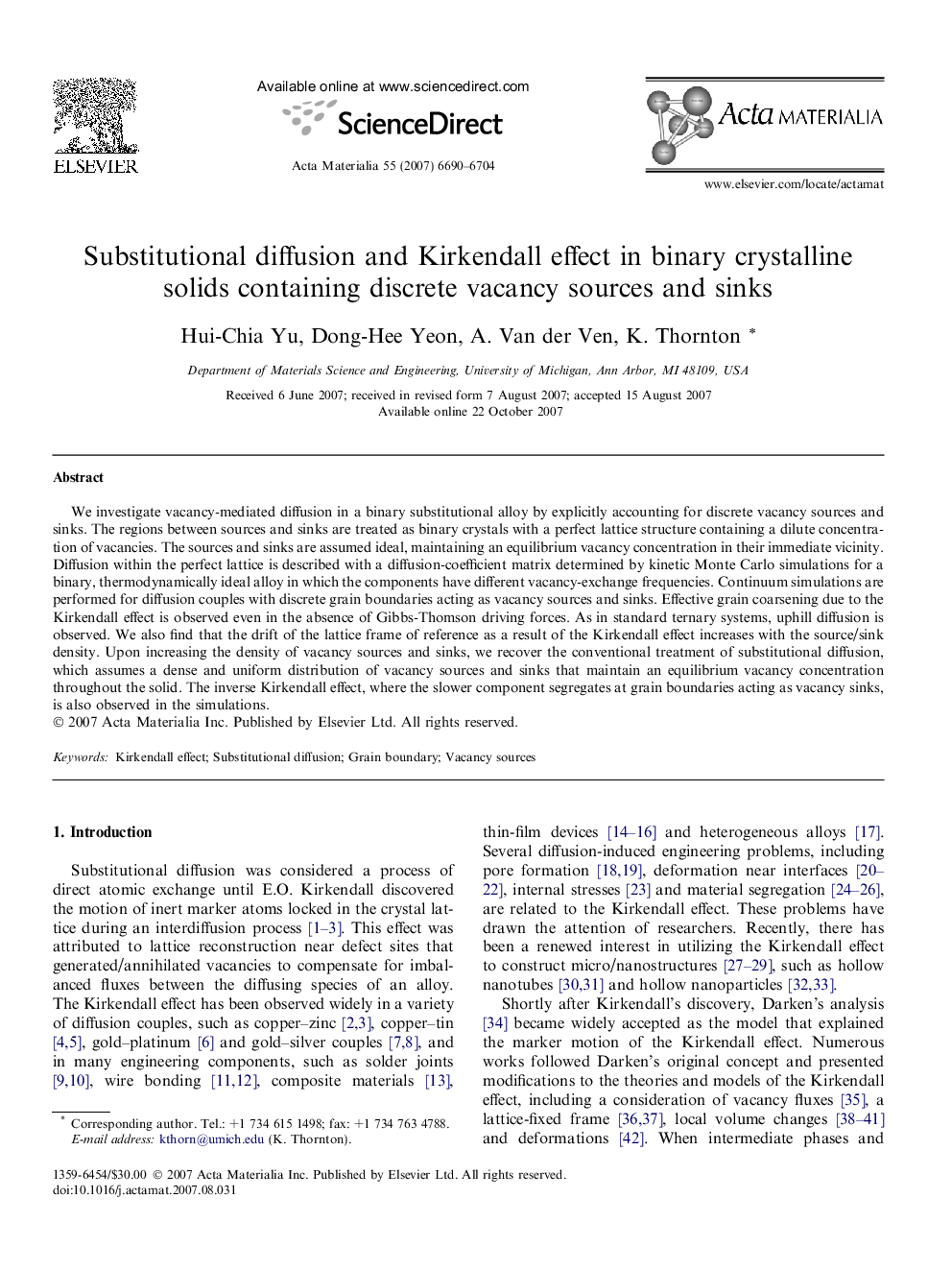| Article ID | Journal | Published Year | Pages | File Type |
|---|---|---|---|---|
| 1449246 | Acta Materialia | 2007 | 15 Pages |
We investigate vacancy-mediated diffusion in a binary substitutional alloy by explicitly accounting for discrete vacancy sources and sinks. The regions between sources and sinks are treated as binary crystals with a perfect lattice structure containing a dilute concentration of vacancies. The sources and sinks are assumed ideal, maintaining an equilibrium vacancy concentration in their immediate vicinity. Diffusion within the perfect lattice is described with a diffusion-coefficient matrix determined by kinetic Monte Carlo simulations for a binary, thermodynamically ideal alloy in which the components have different vacancy-exchange frequencies. Continuum simulations are performed for diffusion couples with discrete grain boundaries acting as vacancy sources and sinks. Effective grain coarsening due to the Kirkendall effect is observed even in the absence of Gibbs-Thomson driving forces. As in standard ternary systems, uphill diffusion is observed. We also find that the drift of the lattice frame of reference as a result of the Kirkendall effect increases with the source/sink density. Upon increasing the density of vacancy sources and sinks, we recover the conventional treatment of substitutional diffusion, which assumes a dense and uniform distribution of vacancy sources and sinks that maintain an equilibrium vacancy concentration throughout the solid. The inverse Kirkendall effect, where the slower component segregates at grain boundaries acting as vacancy sinks, is also observed in the simulations.
